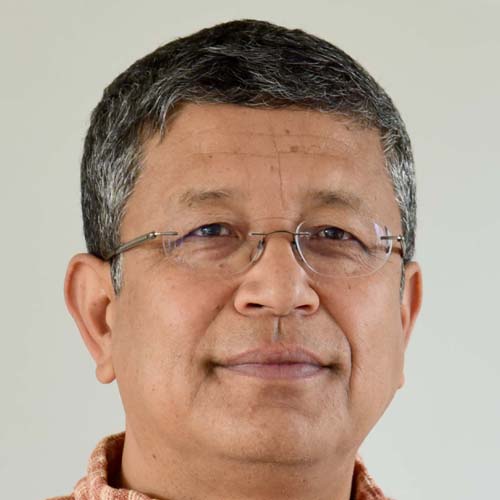Columns
State of the minorities in South Asia
Nepal's dominant Khas Arya minority reaps disproportionate benefits of their status.
Deepak Thapa
It has been 60 years since the new Muluki Ain of 1963 was adopted and one’s caste status ceased to be the consideration for the quantum of punishment for crimes committed. The new country code followed the earlier promise of the 1959 and 1962 constitutions, granting equality before the law irrespective of caste, creed, etc. The 1990 constitution reiterated the principle of equality more forcefully and declared that no one would be ‘discriminated against as untouchable, be denied access to any public place, or be deprived of the use of public utilities’. Thereafter came the government announcement in 2001 that the ‘practice of social discrimination and untouchability’ was a punishable offence, the 2006 parliamentary declaration that Nepal was ‘an untouchability-and-discrimination-free country’, and the 2007 Interim Constitution’s inclusion of the right against untouchability as a separate fundamental right. And, finally, in 2011, the country saw the Caste-Based Discrimination and Untouchability (Offence and Punishment) Act.
All of these are well-known facts. They also show how slowly the wheels of the state turn. Implementation has been shabbier as in the very recent incident from Okhaldhunga when one Laxman Gurung and members of the temple management committee prevented Dalit women from entering a Shiva temple. Instead of the perpetrators facing the full force of the law, following a well-trod path local authorities harked to social harmony and hammered out an agreement between the two sides that things will be different from now.
Much as one recoils at such injustice that has enabled even greater ones against Dalits over the years, including those involving outright murders, we as a nation are so much better off than the rest of the region. I say this out of the experience of having helped compile the annual South Asia State of Minorities Report for the last so many years. Editing the individual country chapters from across the region invariably ends with my going through ‘secondary or vicarious trauma’ although in my case it is quite temporary. That is because reading in detail the scale of human barbarity against other human beings is just so disturbing.
The evil that we do
The state of minorities reports do not deal with Bhutan and the Maldives for the simple reason that contributors willing to stick their necks out to write about those two countries have not been found. Suffice it to say that having got rid of a seventh of its population, consisting mainly of minorities, and decades later still cracking down on any reporting on that established fact, Bhutan’s record stands blemished no matter how much it trumpets its ‘national happiness’. Likewise, as a country that allows the practice only of Sunni Islam and grants citizenship only to Sunnis, there is little more to be said of the Maldives.
The other six countries of South Asia do feature in the aforesaid reports and it is there year after year for all to see what we are capable of. Nepal does stand out as an exception in so many respects and I will come back to it at the end. But in each of the other countries, there are majorities and minorities, with the idea that the former feels almost duty-bound to visit upon the latter all manner of heinousness possible.
There is no fixed pattern about who forms the majority. It can be defined by ethnicity—numerically as with Sri Lanka’s Sinhalese or dominance as in Afghanistan’s Pashtuns. Language remains significant only in the case the Urdu-speaking ‘Biharis’ trapped in Bangladesh. There are the Dalits across the northern part of South Asia, including Nepal, who continue to be subjected to treatment that is straight out of the mediaeval past. This practice is not limited to Hindus alone since Muslims and Buddhists are also active and willing participants in the dehumanisation of Dalits.
Of course, religion is the most prominent marker of the majority-minority dichotomy. Here, we have everyone ranged against everyone else, and unfortunately egged on by the respective states. Hence, Hindus in India are being actively conditioned to view Muslims and Christians as the enemy while the same is true of Buddhists in Sri Lanka. In Bangladesh, it is the Hindu and Buddhist populations that are at the receiving end, in Pakistan, Hindus and Christians, and in Afghanistan, Hindus and Sikhs. And, in all these three Muslim-majority countries, there are smaller Muslim groups, mainly, Shias and Ahmadiyya, who are treated as badly if not worse than non-Muslims.
The outlier
In terms of the manner and level of atrocities committed against fellow citizens across South Asia, Nepal fares so much better. Granted that the issue of discrimination against Dalits continues to crop up every now and then here as well but it cannot be compared with the near-casualness with which minorities are persecuted, and often killed, in the rest of the region. Yes, discrimination continues at various levels, including structural, with the continued incarceration of Resham Chaudhary and others in the Tikapur case standing as a prominent example. The country’s dominant minority of the Khas Arya do disproportionately reap the benefits accruing from their status. But nowhere in Nepal does any group feel it has the right to hound any other based on difference of caste, ethnicity, religion, language or origin. Although prone to some dithering for any number of reasons, the state certainly does not promote or condone such behaviour either, as it does all over our neighbourhood.
There was a time not so long ago when it was feared that divisions along similar lines would become a reality in Nepal as well, namely, over the question of the kind of federalism we should adopt. Those fears were fanned mainly by those who disingenuously framed the debate in a way that equated the sharing of power with subjugation. The character of Nepali society being such it would surely preclude such an eventuality but that is a discussion long over now.
It never ceases to amaze me that a considerable body of our citizenry still believe that the future of Nepal lies in the past, particularly on the question of religion. Even though it has been claimed consistently, I have yet to see any evidence of how Hinduism has been weakened or its status lowered by Nepal’s turning into a secular state; the growth in the number of Christians would have happened regardless. The quest for Nepali exceptionalism by virtue of being the world’s only Hindu state is understandable, even if somewhat childish. But I am sure being known as the only South Asian country without religious strife and where all religions are treated equally by the state is a far better distinction.




 20.12°C Kathmandu
20.12°C Kathmandu















